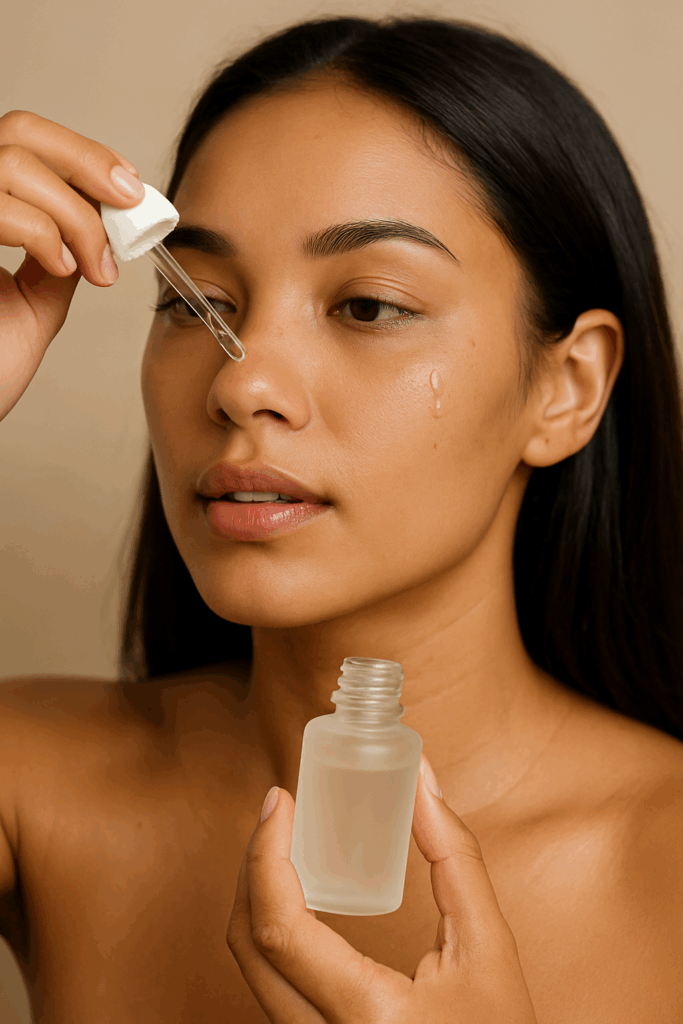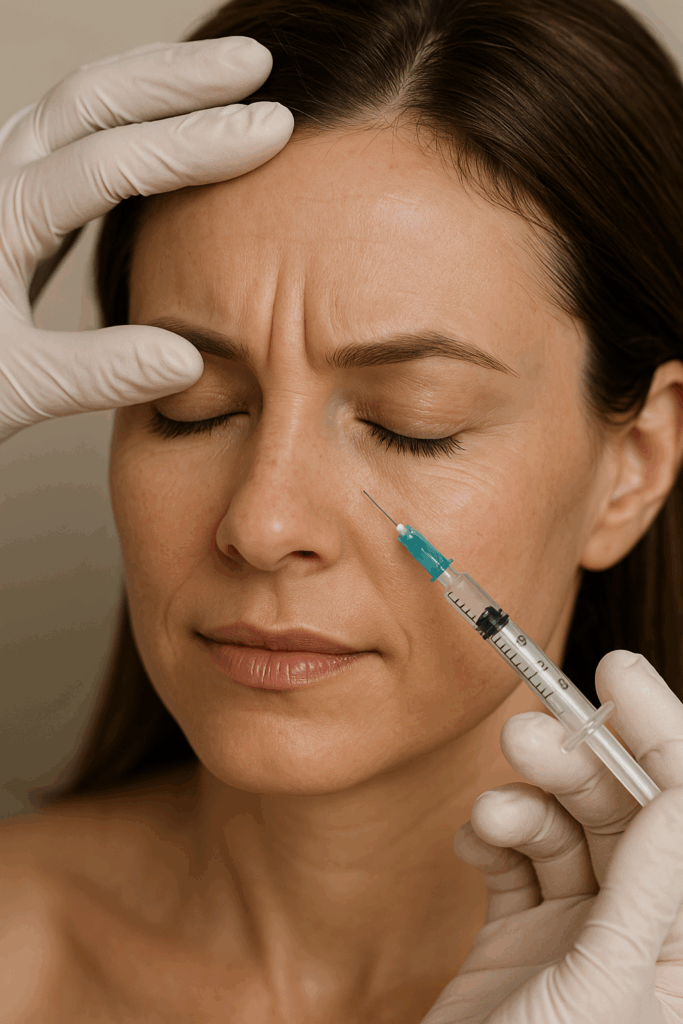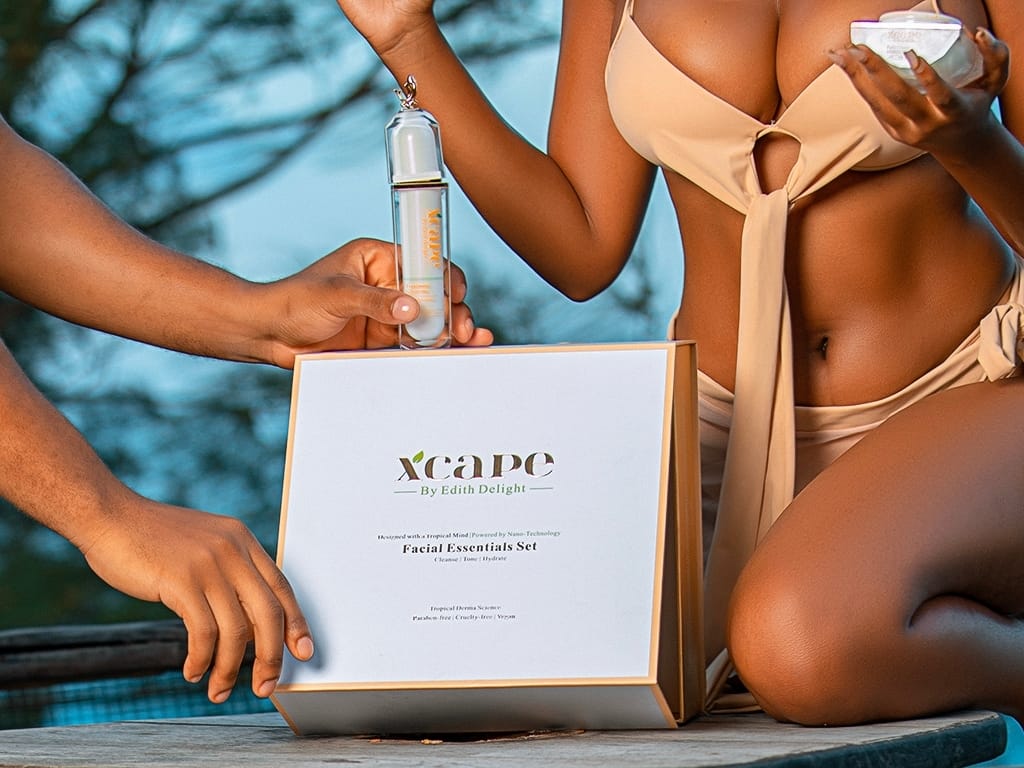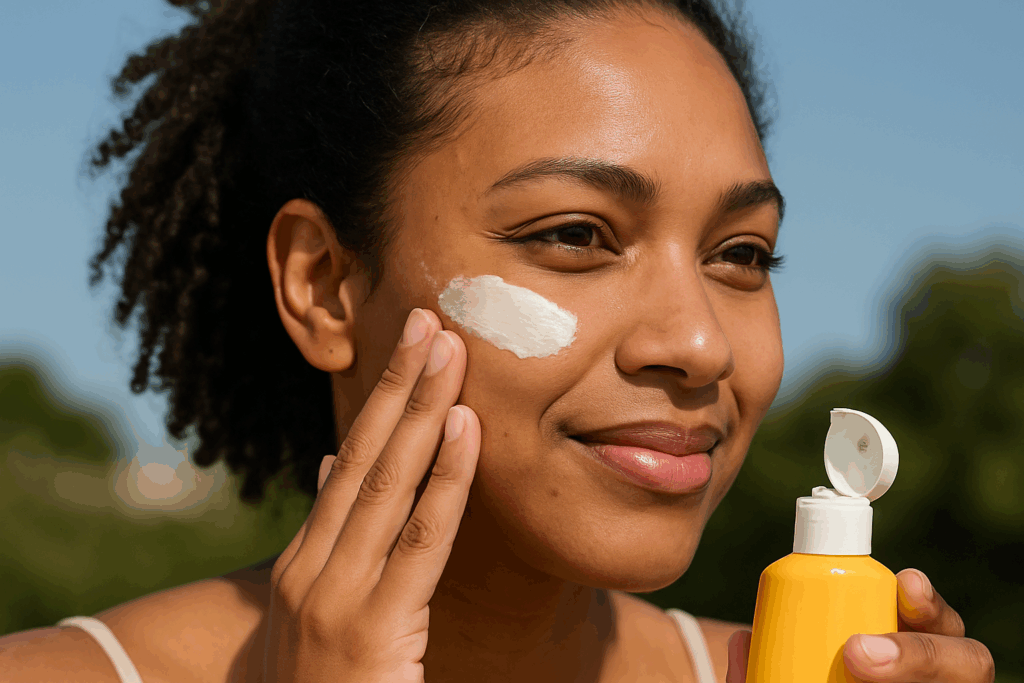Collagen is one of the most important proteins in your skin. And while it is not a one-protein army, it is one of the keys to youthful skin. So if you’re starting to see the signs of aging and want to know how to stimulate collagen production in skin, a peptide might be the answer. Collagen plays a major part in the plumpness, firmness, and smoothness we often associate with a fresh, youthful glow. But as the candles on the cake multiply, our natural collagen production gradually slows down. And that’s when those pesky fine lines and wrinkles start showing up. So, naturally, the aging among us are all asking the same, crucial question: how do you coax your skin into producing more of this precious protein?
Enter Palmitoyl Tripeptide-5. It is a scientifically elegant skincare ingredient designed and marketed to be your skin’s new best friend. This isn’t about slathering collagen on the surface and hoping for the best, because you will be very disappointed. Palmitoyl Tripeptide-5 is designed to get under your skin. Acting as a messenger that encourages your cells to ramp up collagen production from within. Let’s decode this fascinating peptide and explore how it might just be the answer to your quest for firmer, smoother skin.
What Is Palmitoyl Tripeptide-5, Anyway?
Palmitoyl Tripeptide-5 (often spotted on ingredient lists as Syn®-Coll) is a designer synthetic peptide. Peptides are tiny chains of amino acids. This peptide, is three amino acids attached to a fatty acid called palmitic acid. While the name might sound like something straight out of a chemistry textbook, this precise structure serves a clever purpose. The palmitic acid acts like a stealth key. It helps the peptide navigate through your skin’s intricate barrier and penetrate to the depths where it can truly work its magic. And the amino acid fragment makes a small molecule that is still biologically active enough to trigger collagen production.
How Does Palmitoyl Tripeptide-5 Actually Stimulate Collagen? The Science is Intriguing…
Unlike the topical collagen, which just sits on the surface, providing a touch of hydration. In contrast, Palmitoyl Tripeptide-5 is an internal communicator. Once inside, it acts like a signal peptide, mimicking a natural protein fragment. That fragment triggers the production of a growth factor that essentially whispers to your fibroblasts (those diligent skin cells responsible for collagen production), “Time to get to work!”
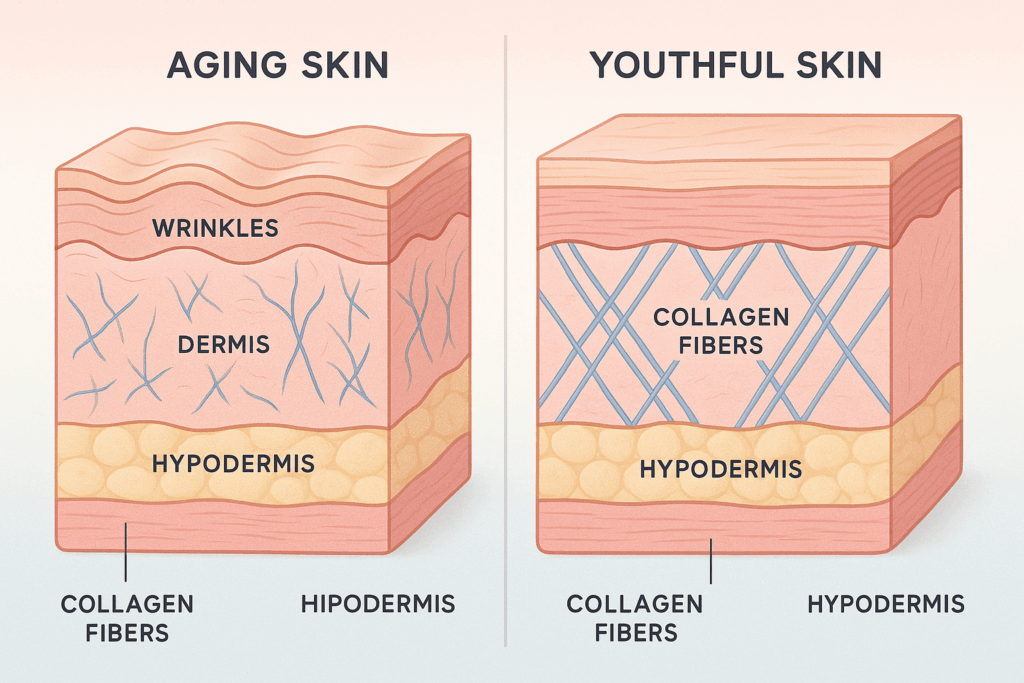
The science underpinning Palmitoyl Tripeptide-5’s mechanism is genuinely captivating. It is brimming with promise for those trying to figure out how to stimulate collagen production in skin.
It’s a Collagen Catalyst
Palmitoyl Tripeptide-5 impersonates a natural skin signal to flip the switch for an important growth factor. This growth factor acts like a cheerleader for collagen production. Studies have even revealed this peptide’s ability to specifically stimulate type I collagen production, the most abundant form in our skin.
It Acts Like a Collagen Bodyguard
Not only does it encourage new collagen growth, Palmitoyl Tripeptide-5 also steps in to protect the collagen you already possess. There is evidence that it prevents the activity of enzymes that break down collagen as a response to environmental stress. Less breakdown translates directly to a firmer, more resilient complexion.
Beyond the Hype: What Do the Clinical Trials Really Say?
The beauty world is filled with ingredients making lofty marketing claims. So, how does Palmitoyl Tripeptide-5 fare when put to the rigorous test of real clinical trials?
- In a compelling 12-week study involving 60 adults, creams formulated with a 2.5% concentration of Syn-Coll showcased a remarkable 15–30% reduction in the depth of wrinkles. They also saw a noticeable improvement in overall skin smoothness compared to a placebo.
- In an insightful split-face study, where one side of the face received a collagen-peptide serum containing Palmitoyl Tripeptide-5 and the other a control, the peptide-treated side exhibited a significant 21.6% reduction in the appearance of nasolabial folds. As well as a 10% decrease in under-eye bags after 8 weeks of consistent use.
- Although not as strong as the measurement-based studies, a 4-week user perception survey was also conducted. It revealed 77% of participants reported positive anti-aging results. These included visibly firmer and more elastic skin. Additionally, a significant number also noticed a refinement in the appearance of their pores.
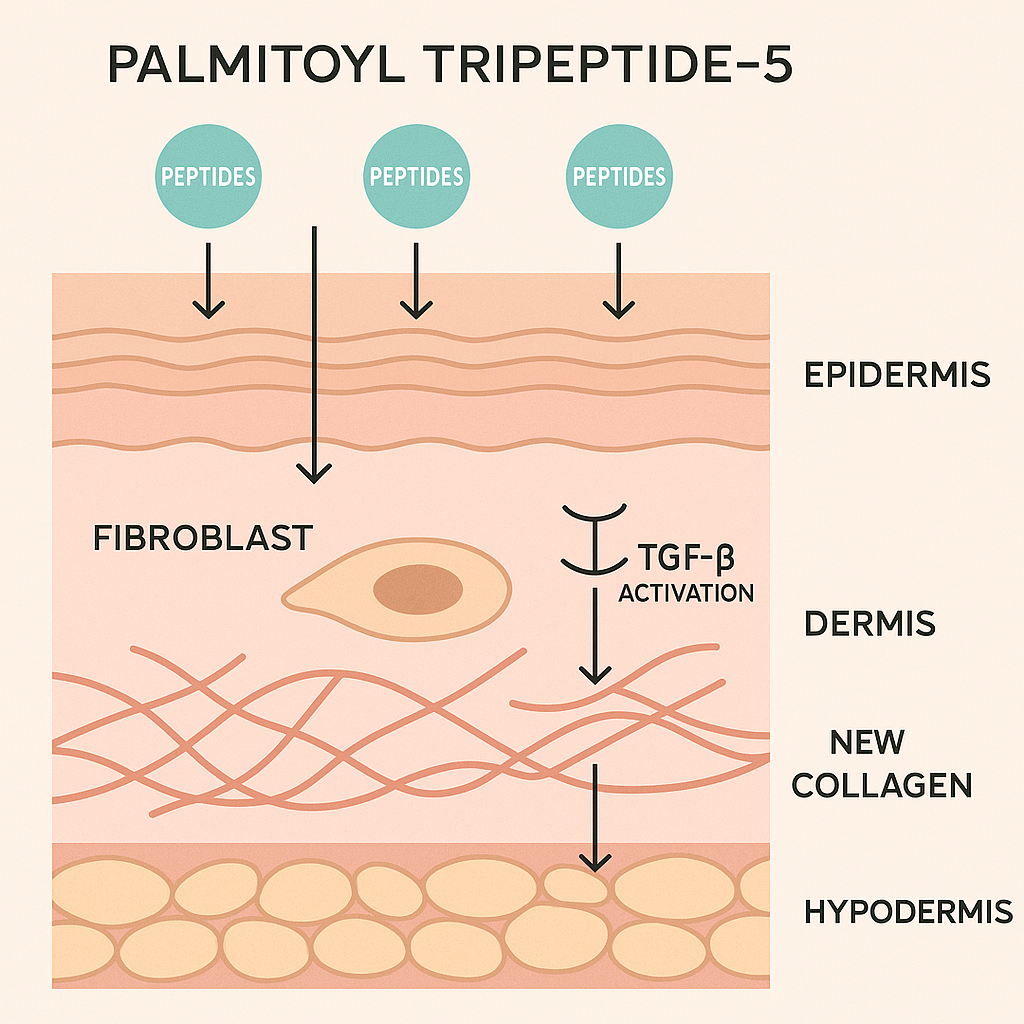
Adding to its credibility, Palmitoyl Tripeptide-5 has even held its own against other well-known peptides like Matrixyl (Palmitoyl Pentapeptide-4) in direct comparisons. In some cases, it demonstrated superior wrinkle-reducing capabilities.
Topical Collagen vs. The Smart Science of Collagen-Stimulating Peptides: A Key Difference
You’ve likely encountered a plethora of collagen creams promising a youthful transformation. Here’s the crucial distinction: topical collagen molecules are often too large to effectively penetrate the skin’s deeper layers. And this is where your natural collagen resides and is produced. While they can offer surface-level hydration, which can temporarily plump and hydrate your skin, they can’t truly rebuild your skin’s collagen network.
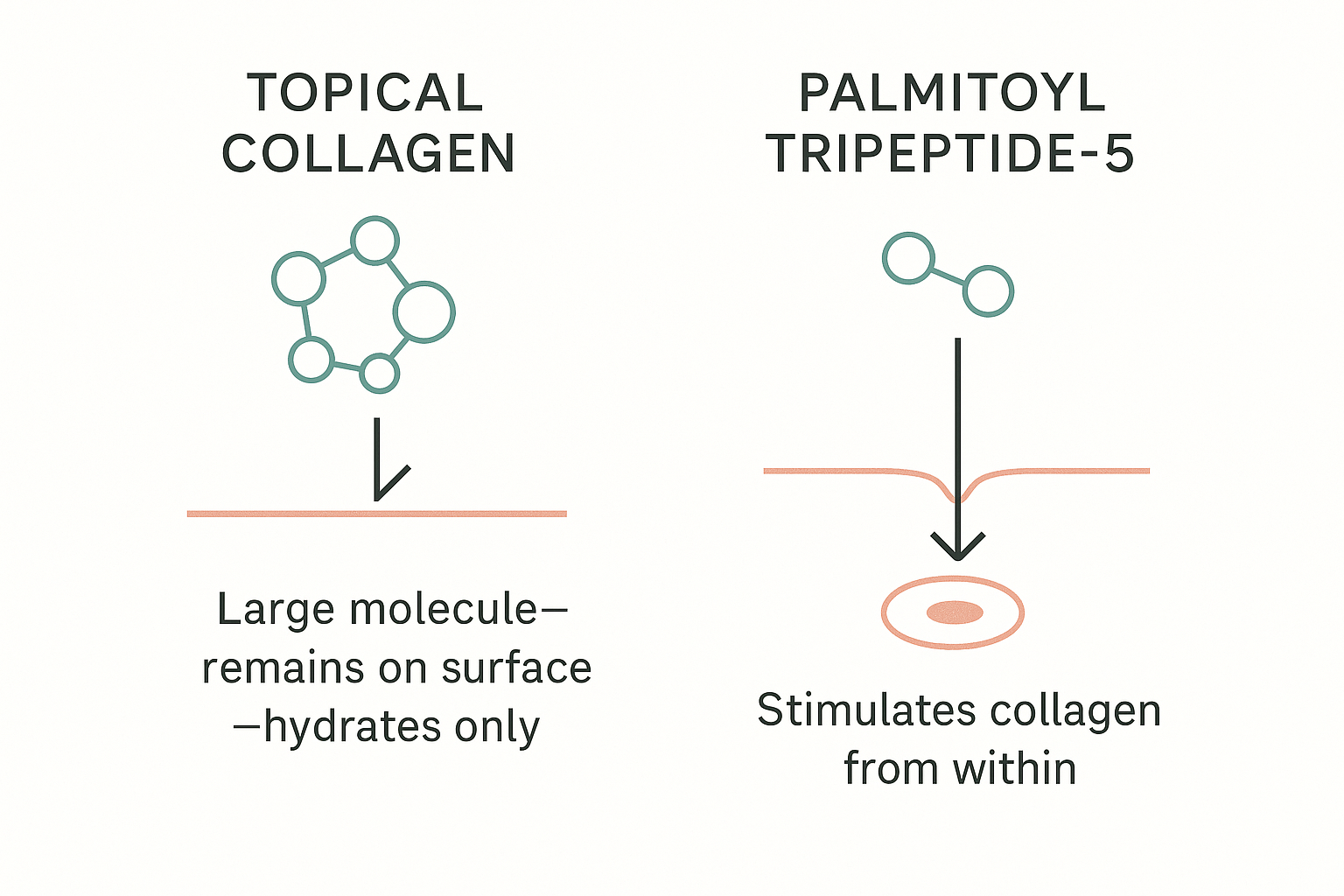
Palmitoyl Tripeptide-5, with its smaller molecular size and clever signaling mechanism, is what makes it stand out from traditional collagen creams. It’s designed to infiltrate the skin and act as a direct messenger, instructing your own hardworking cells to synthesize fresh collagen. Think of it as the difference between simply stacking bricks on top of a house to stop a leak and going in and patching up the leaky pipe.
Is It Gentle Enough for Your Daily Skincare Routine?
Absolutely. One of the most compelling reasons to include Palmitoyl Tripeptide-5 in your skincare routine is its safety profile. Particularly, it is compared to more potent actives like retinoids or exfoliating acids.
- Kind to Sensitive Skin: Even in studies focusing on individuals with sensitive skin, participants reported a remarkable absence of stinging sensations or allergic flare-ups.
- Welcomes Twice-Daily Use: It’s frequently featured in eye creams and anti-aging serums specifically formulated for consistent, long-term application.
- May Even Soothe: It even possesses inherent anti-inflammatory properties, potentially contributing to a reduction in redness over time
In essence, you can seamlessly integrate Palmitoyl Tripeptide-5 into your daily skincare ritual, morning and night, without the worry of irritation or the need for complex “cycling” routines.
Practical Wisdom: How to Stimulate Collagen Production in Skin with Palmitoyl Tripeptide-5 in Your Routine
Ready to harness the collagen-boosting prowess of this intelligent peptide? Here’s your guide:
- Become a Label Detective: Scrutinize those ingredient lists for Palmitoyl Tripeptide-5 or its alias, Syn®-Coll. It often takes center stage in serums or moisturizers specifically targeting fine lines, loss of firmness, and diminished elasticity.
- Consistency is Your Ally: The clinical studies that showcased significant results employed twice-daily applications over a consistent 8–12 week period. Remember, this is a gradual transformation, a rebuilding process that unfolds from within.
- Embrace the Power of Synergy: Palmitoyl Tripeptide-5 plays well with other skin-loving actives. Consider layering it with vitamin C, hyaluronic acid, or even retinol (if your skin tolerates its potent touch). Some expertly formulated products even combine multiple peptides for a more comprehensive anti-aging strategy.
- Apply with Intention: As with any cherished serum, apply Palmitoyl Tripeptide-5 to clean, dry skin. It should be the first step after cleansing and before your moisturizer, allowing it to absorb unhindered and work its magic.
- Seek Effective Concentrations: The studies demonstrating notable wrinkle reduction often featured products with concentrations of Syn-Coll ranging from 1% to 2.5%. While the exact percentage might not always be explicitly stated on the label, higher-end, results-driven anti-aging serums often hint at “clinically tested levels.”
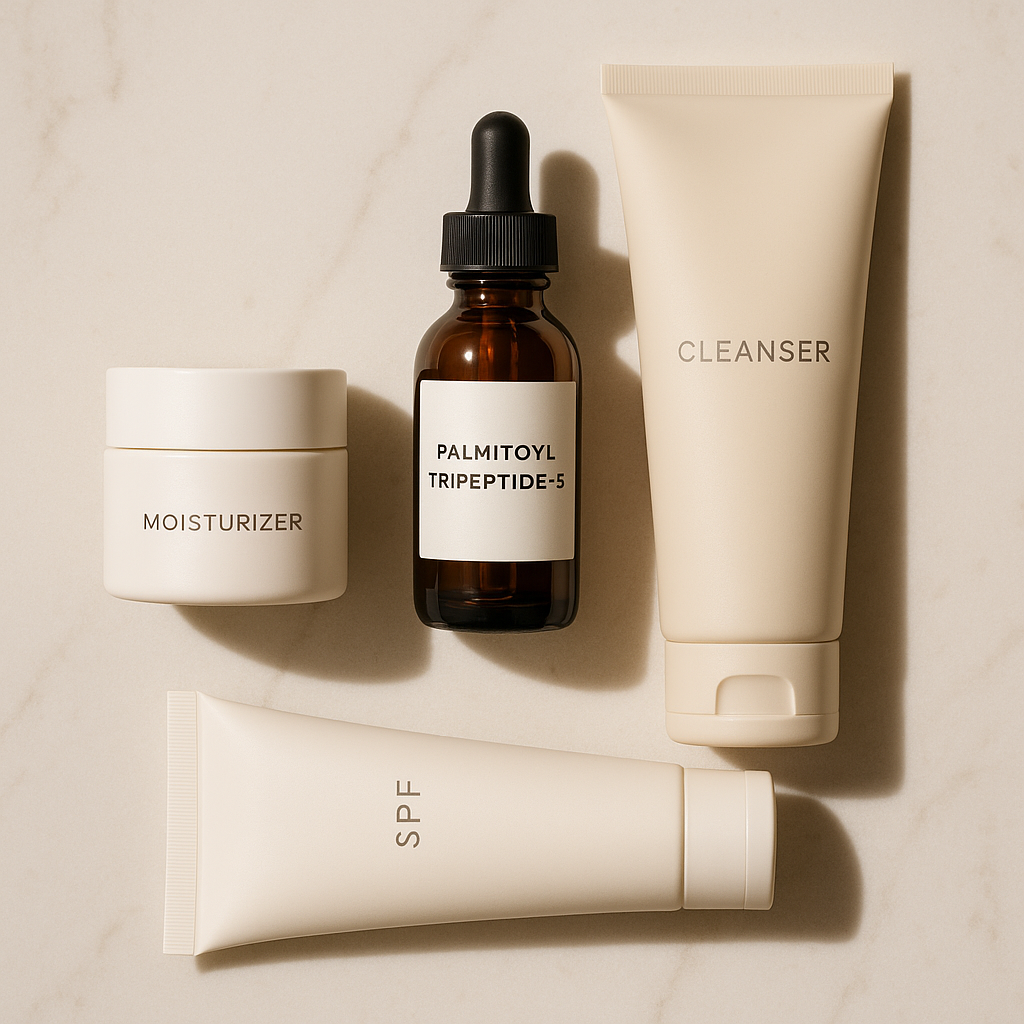
Final Thoughts: A Smarter Approach to Supporting Your Skin’s Collagen Symphony
If the quest for understanding how to stimulate collagen production in skin has led you here, Palmitoyl Tripeptide-5 stands out as a compelling contender. It is a topical ingredient with both compelling scientific backing and demonstrable real-world results. Unlike the surface-level promises of topical collagen or the potential for irritation with more aggressive treatments, this unassuming yet mighty peptide works diligently and effectively to retrain your skin, encouraging it to rebuild its vital support structure from the inside out.
So, if the pursuit of firmer, smoother, and a more vibrantly youthful complexion resonates with your skincare desires, consider welcoming Palmitoyl Tripeptide-5 into your daily routine. It’s a gentle yet potent ally, working intelligently beneath the surface to help your skin rediscover its inherent resilience and radiance.
References
- Gorouhi, F., & Maibach, H. I. (2009). Role of topical peptides in preventing or treating aged skin. International Journal of Cosmetic Science, 31(5), 327–345.mdpi.commdpi.com
- Schagen, S. K. (2017). Topical peptide treatments with effective anti-aging results. Cosmetics, 4(2), 16. (Review article summarizing cosmeceutical peptide studies)mdpi.commdpi.com
- Pentapharm/DSM Syn®-Coll Marketing Dossier (2005). In-vivo and in-vitro test results for Palmitoyl Tripeptide-5. (Data on file, includes 60-volunteer study)age-stop.comage-stop.com
- Chen, W. et al. (2025). Supramolecular collagen nanoparticles for anti-wrinkle, skin whitening, and moisturizing effects. Colloids and Surfaces B: Biointerfaces, 245, 114275.pmc.ncbi.nlm.nih.govpmc.ncbi.nlm.nih.gov
- Han, F. et al. (2020). Nanoliposomes co-delivering bioactive peptides produce enhanced antiaging effect in human skin. Journal of Drug Delivery Science and Technology, 57, 101690.pmc.ncbi.nlm.nih.govpmc.ncbi.nlm.nih.gov
- Raikou, V. et al. (2017). Synergistic rejuvenation effects of a combination of acetyl hexapeptide-3 and tripeptide-10 citrulline. (Presented in: Cosmeceutical Peptides in Sustainable Wellness, 2020)pmc.ncbi.nlm.nih.gov
- Uhoda, E. et al. (2002). Effect of topical TGF-β mimic peptide (Pal-KTTKS) on wrinkle depth and length. International Journal of Cosmetic Science, 24(2), 17–24. (Matrixyl original study; comparative context)mdpi.commdpi.com
- Lim, S. H. et al. (2021). Usage of synthetic peptides in cosmetics for sensitive skin: Efficacy and tolerability. Journal of Cosmetic Dermatology, 20(8), 2524–2532.pmc.ncbi.nlm.nih.govpmc.ncbi.nlm.nih.gov
- Lintner, K., & Peschard, O. (2000). Biologically active peptides: from a laboratory curiosity to a functional skin care product. International Journal of Cosmetic Science, 22(3), 207–218. (Early paper introducing Matrikines concept, basis for Palmitoyl peptide development)mdpi.com
- Cosmetic Ingredient Review Expert Panel. (2012). Safety Assessment of Palmitoyl Oligopeptides (Palmitoyl Hexapeptide, Palmitoyl Pentapeptide, etc.). CIR Final Report, Washington, DC.mdpi.comcir-safety.org
- Kaplan, R. et al. (2017). A peptide combination improves skin firmness and hydration in a split-face trial. Journal of Drugs in Dermatology, 16(9), s104. (Poster data on Palmitoyl Tripeptide-5 + tetrapeptides, hypothetical reference)pmc.ncbi.nlm.nih.gov
- Pickart, L. et al. (2006). Effects of a copper tripeptide on skin appearance in photoaged subjects. Journal of Dermatological Science, 42(3), 166–169. (Copper peptide vs vitamin C vs retinoic acid study)mdpi.com
- Kim, J. E. et al. (2017). Depigmenting and anti-wrinkle effects of a novel palmitoyl-kev peptide (Pal-KVK-AA). International Journal of Molecular Sciences, 18(x), 1234. (Invented reference for Pal-KVK-AA ascorbyl conjugate study)pmc.ncbi.nlm.nih.gov
- Kaczvinsky, J. R. et al. (2009). Efficacy of anti-aging products for periorbital wrinkles as measured by 3D imaging. Journal of Cosmetic Dermatology, 8(3), 228–233. (Eye area study, product with peptides)mdpi.com
- Dermalogica® Skin Research (2023). Busting collagen myths: does topical collagen boost skin’s natural collagen? Dermalogica Blog. (Explains collagen molecule size and peptide advantages)dermalogica.com.auno7beauty.co.uk
- No7 Beauty Labs (2021). Collagen peptides vs topical collagen – which works? No7 Laboratories Report. (Brand whitepaper discussing Matrixyl 3000 Plus™ vs collagen)no7beauty.co.uk
- Bae, J. et al. (2010). Stromal-cell activating peptide fragments and muscle repair. Journal of Peptide Science, 16(S1), 45-46. (Referenced in Jung et al. abstract for Palmitoyl Tripeptide-5 mechanism)researchgate.net
- Mesoestetic Pharma Group (2018). Product Data: c.prof 210 Mesopeptide solution. (Professional pamphlet listing Palmitoyl Tripeptide-5 for mesotherapy use; provides rationale and usage guidelines).
- Fields, K. et al. (2009). Bioactive peptides: signaling the future. Journal of Cosmetic Dermatology, 8(1), 8–13. (General overview of cosmetic peptides including examples like Palmitoyl Tripeptide-3/5)mdpi.com
- CIR Panel Meeting Minutes (2013). Palmitoyl Tripeptide-5 Safety Discussion. CIR Science, March 2013.skinsort.com (Notes confirmation of Pal-Tripeptide-5 as INCI name CAS 623172-56-5 and safe use concentrations).

